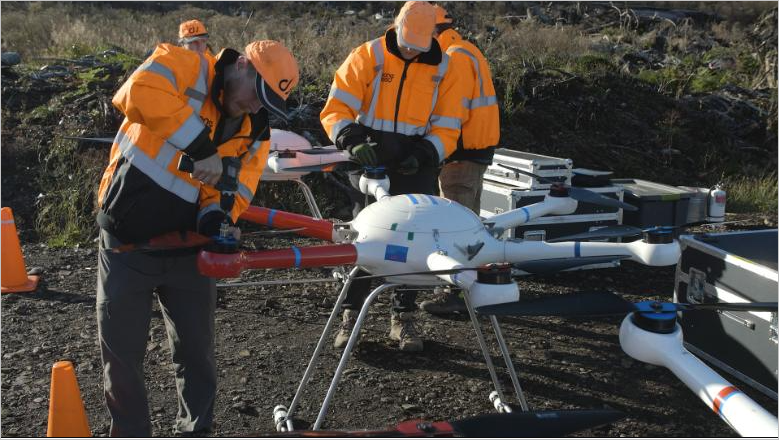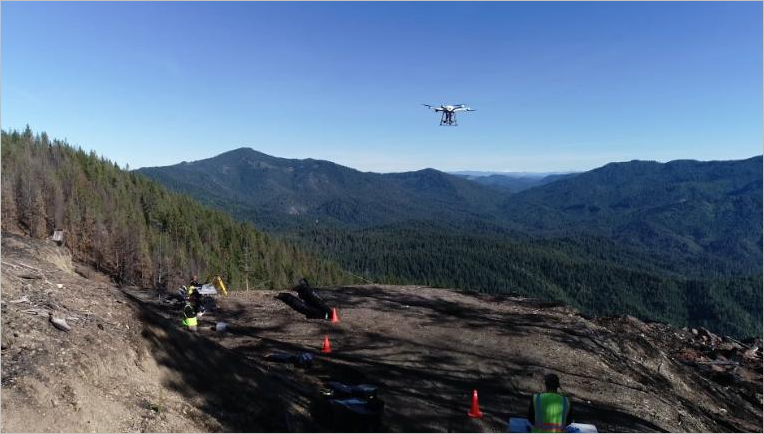A Seattle-based U.S company, DroneSeed has deployed drones in an innovative, much faster, and more effective way to provide solutions in the replanting of forests devastated by wildfires. The company uses fleets of drones (drone swarms) to replant hundreds of trees in forest areas that have been decimated. The operation involves dropping “seed vessels” into areas where they have the best likelihood of sprouting back to life.
The process of regenerating the forests would ordinarily take several years and involve hundreds of persons manually replanting the saplings.
Up to five eight-foot drones, flying together on pre-programmed routes, work to cover up to 50 acres a day and each drone carries up to 26 kg of seed vessels. According to DroneSeed CEO, Grant Canary, this approach is six times faster than a tree planter doing about two acres a day, and it has enabled the company to cut the supply chains for getting new seeds in the ground down from three years to an impressive three months.
DroneSeed had gotten exemptions from the US regulatory authority, the Federal Aviation Administration that allowed it to use the drone swarms to replant burned forests. The company is already restoring devastated forests in California and Oregon and is also examining other fire-stricken areas where its technology could be deployed to great effect.
Aerial sowing, that is, replanting forests from the air is however not a new approach – planes and helicopters have often been used to disperse seeds. This method is cheaper and easier than traditional hand planting but may not be as effective, with a significantly lower success rate. Selecting the right species of seed and the right place to drop them is the key to dramatically improving the success rate.
DroneSeed uses its proprietary seed vessels to accomplish greater success. The specially designed vessels consist of a combination of fertilizers, nutrients, and pest deterrents that assist the seeds take root more effectively without having to be physically buried in the ground.
The vessel is also capable of deterring squirrels and other rodents from destroying the seedling with the application of spicy pepper and other deterrent ingredients.
Droneseed also deploys Lidar technology to create a 3D map of the terrain and sensors that measure different wavelengths of light to get an accurate view of the topology and nature of the soil. LIDAR technology is also used in self-driving cars and even on Robotic Vacuum Cleaners to map the home terrain.
DroneSeed is of the view that it can grow more than 140 trees per acre based on trials conducted in New Zealand and Washington state.
We must point out that this drone looks similar to DJI’s T30/T10 Plant protection drones that were launched recently in China.
UP NEXT: Oppo X 2021 unveiled as the world’s first smartphone concept with an extending display







